Full text
PDF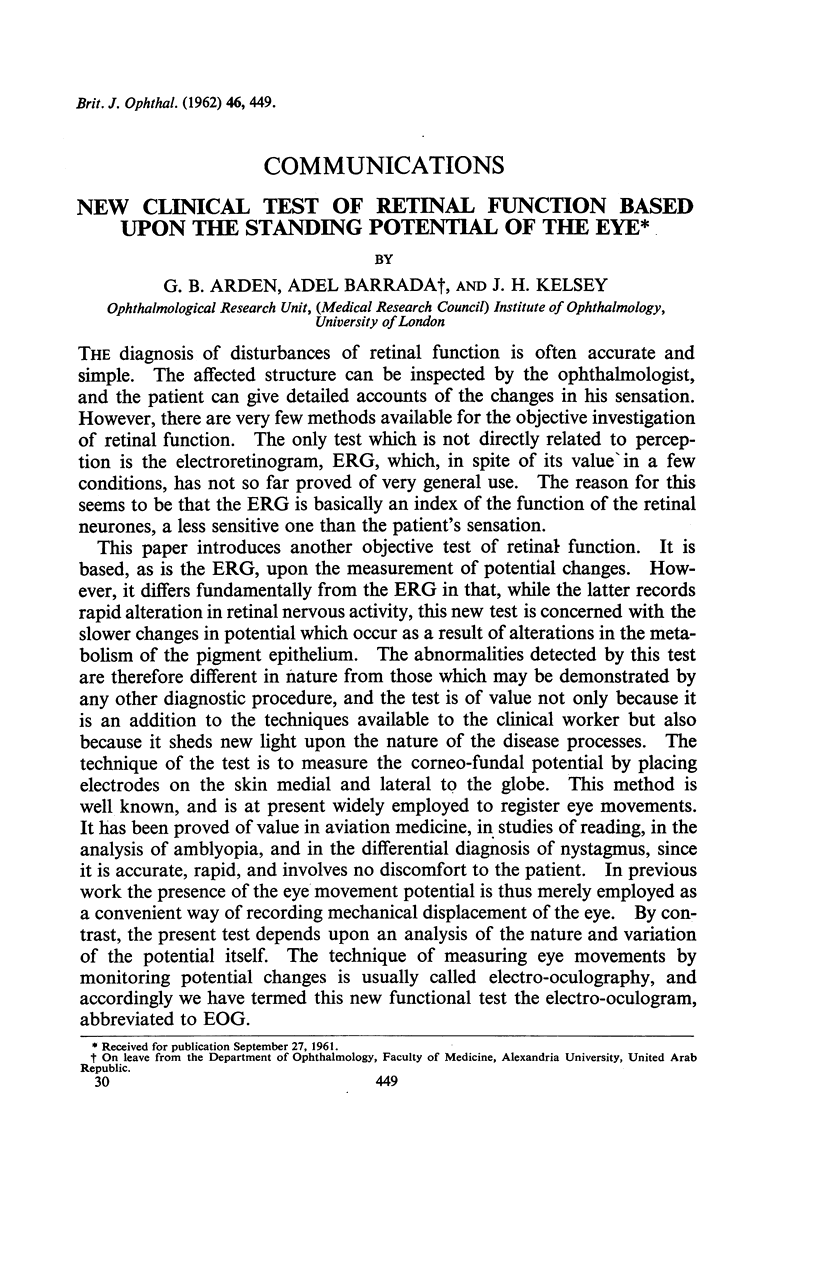
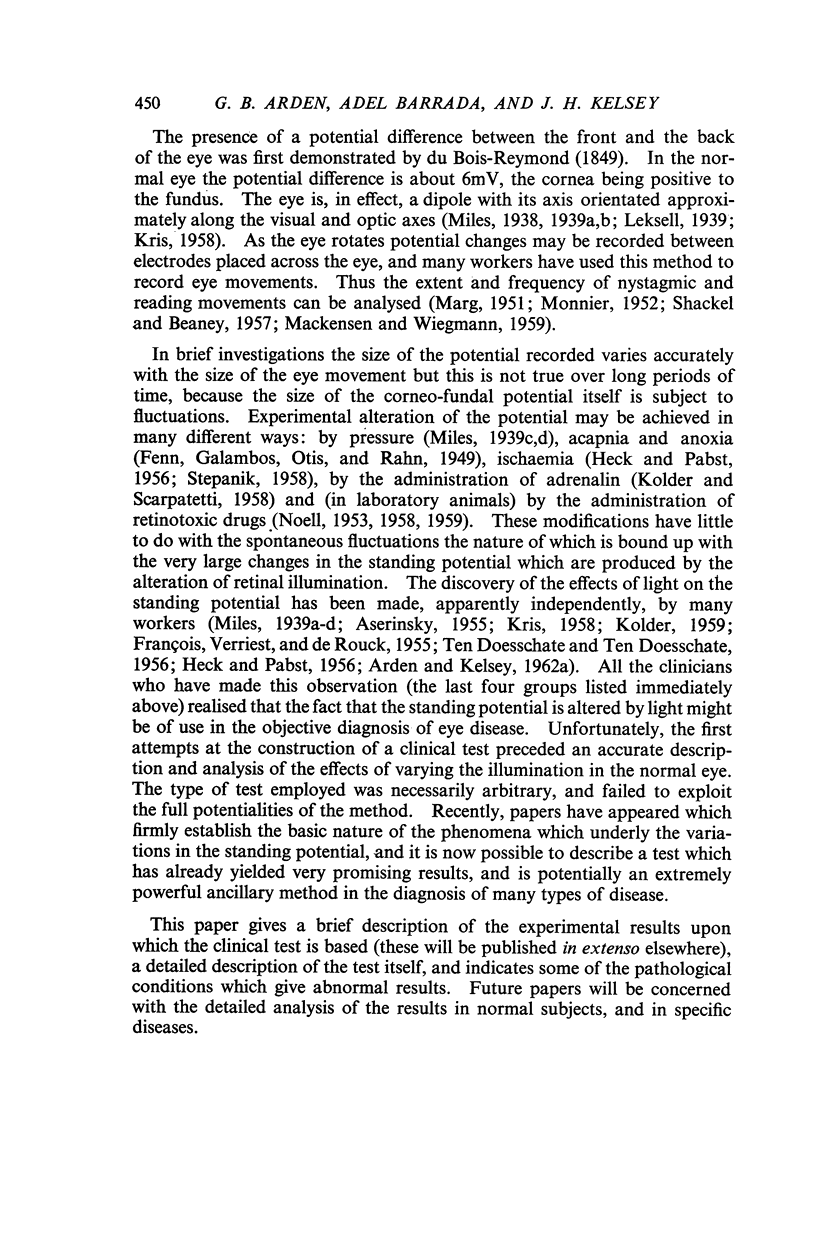
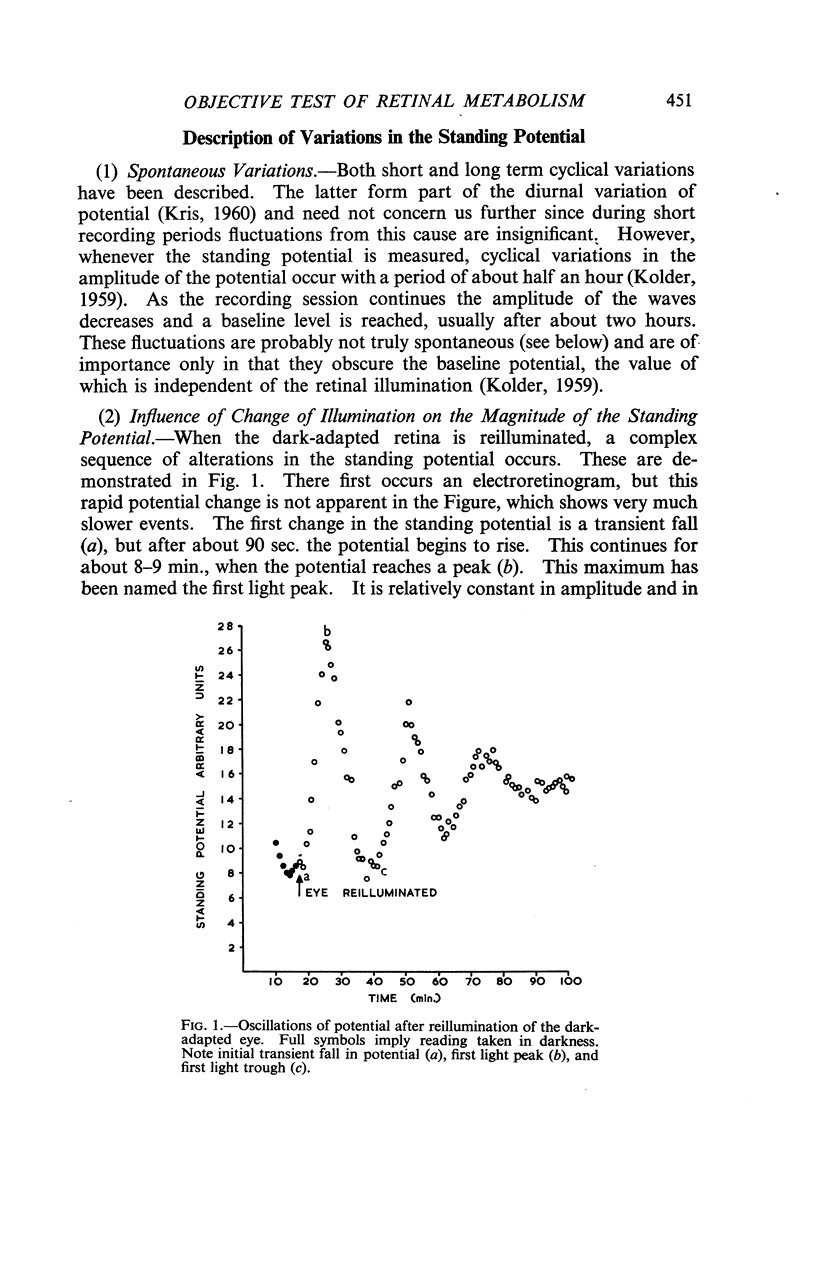
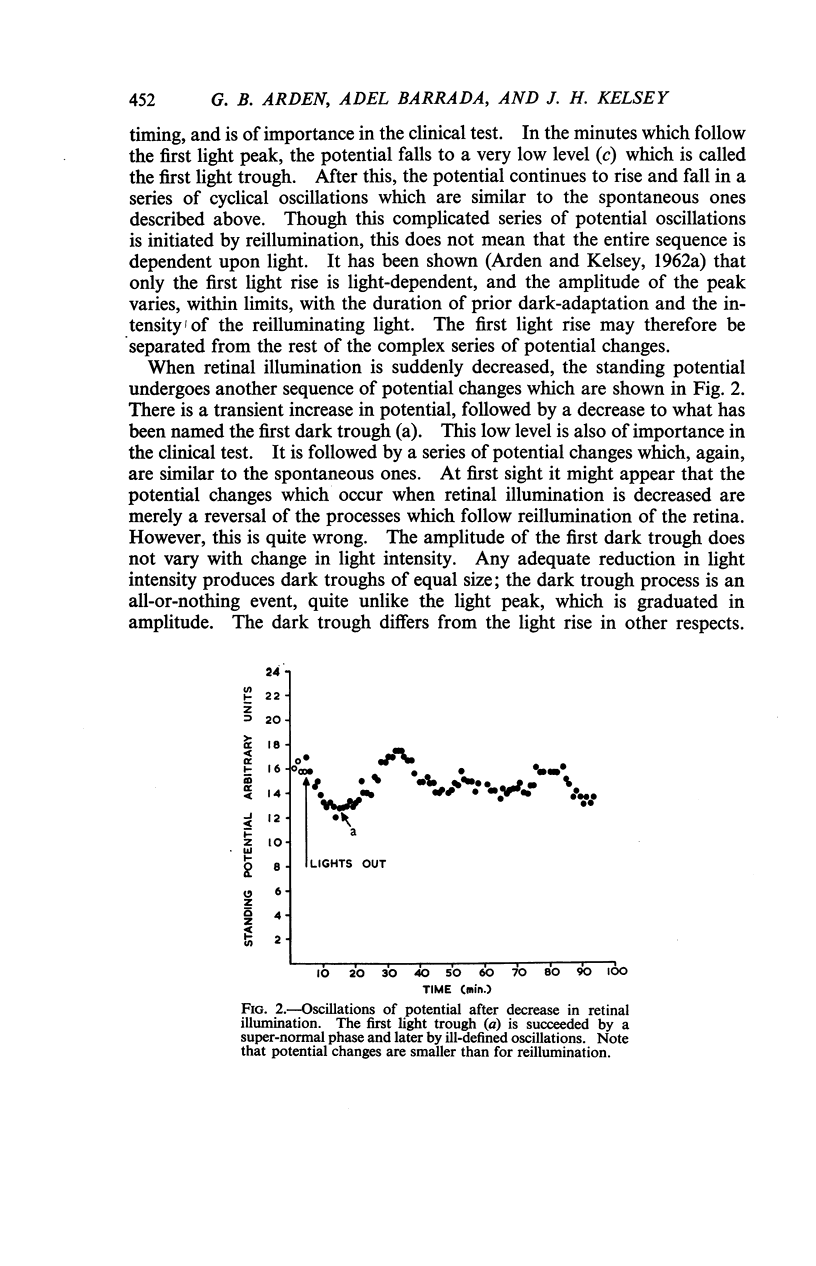
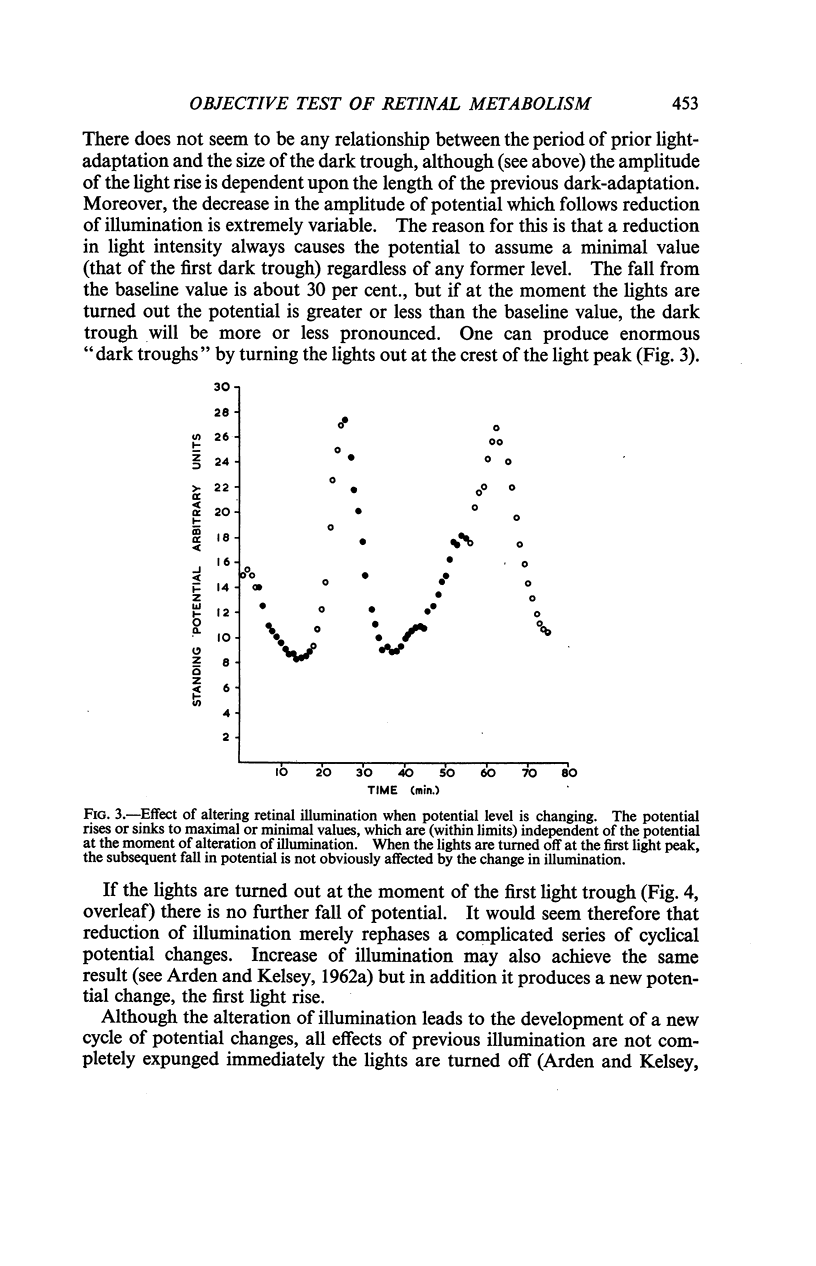
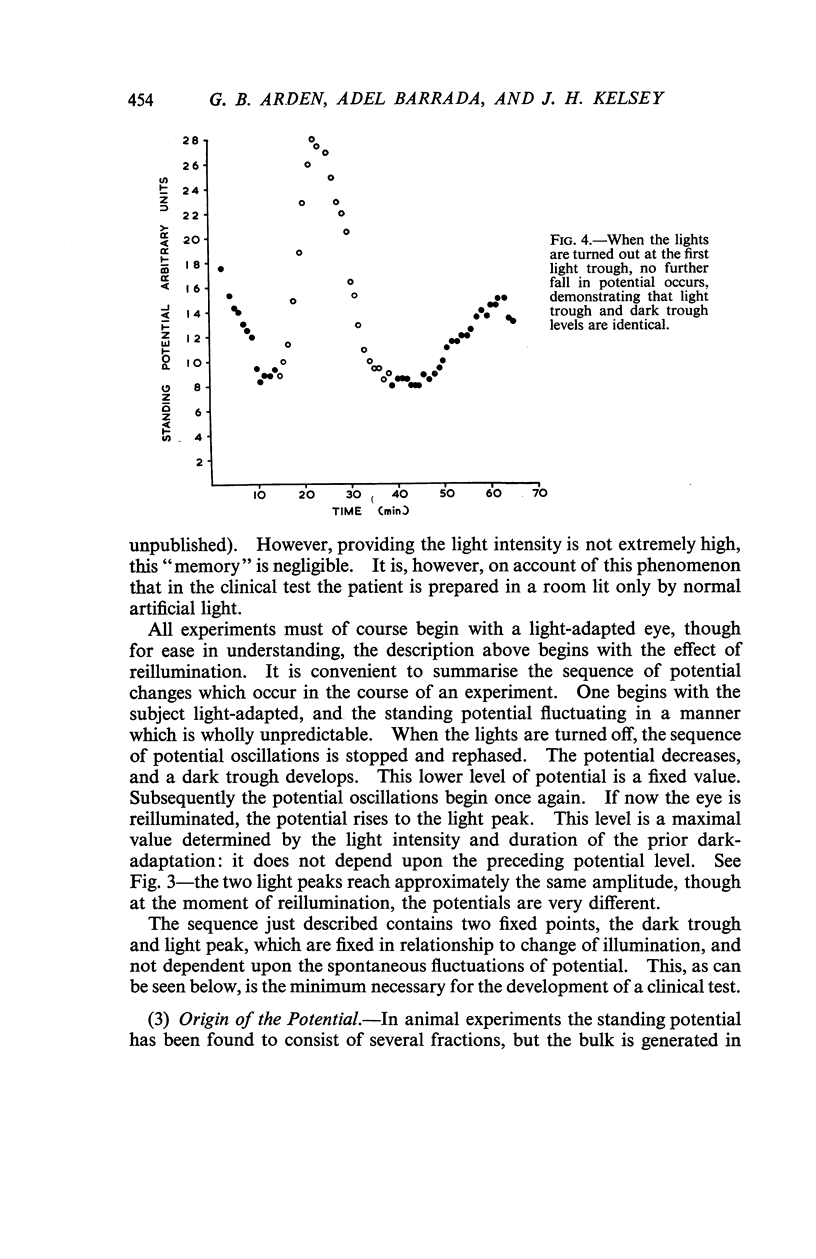
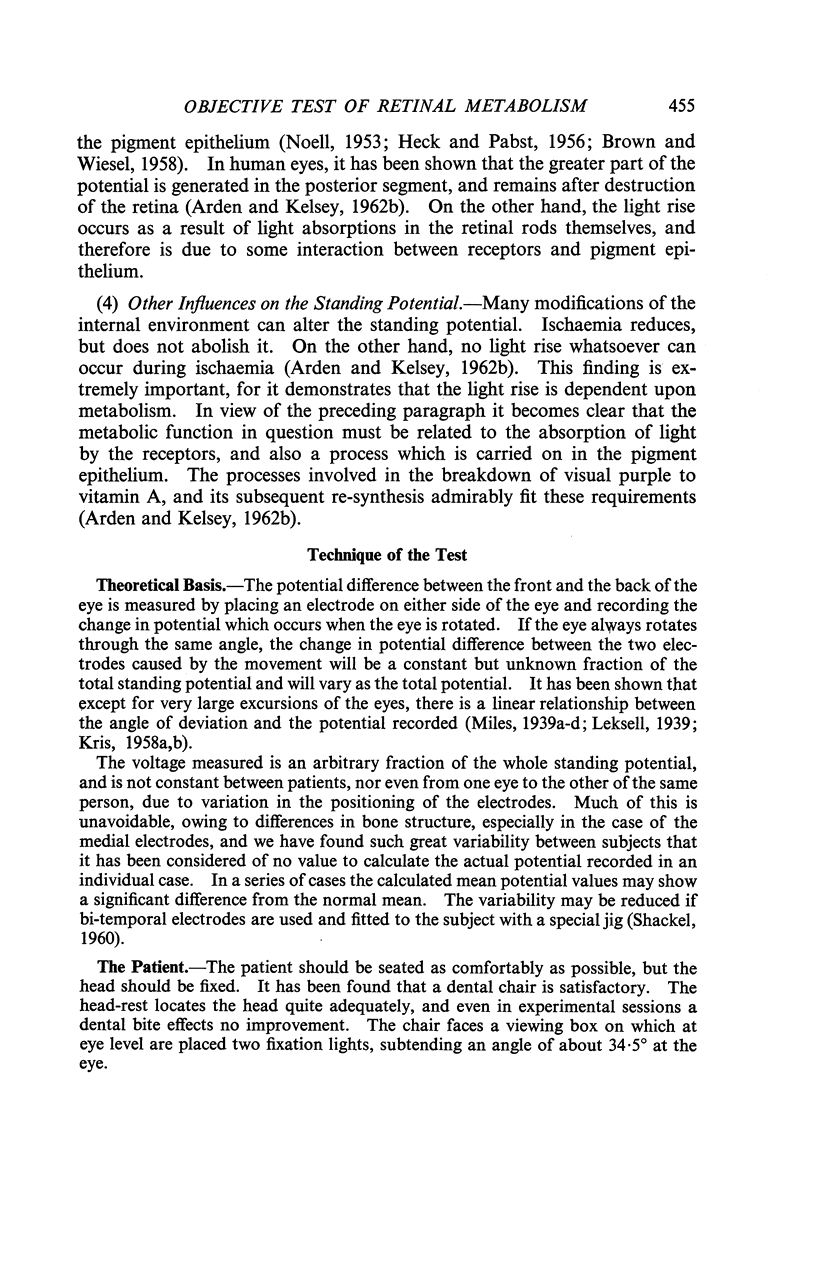
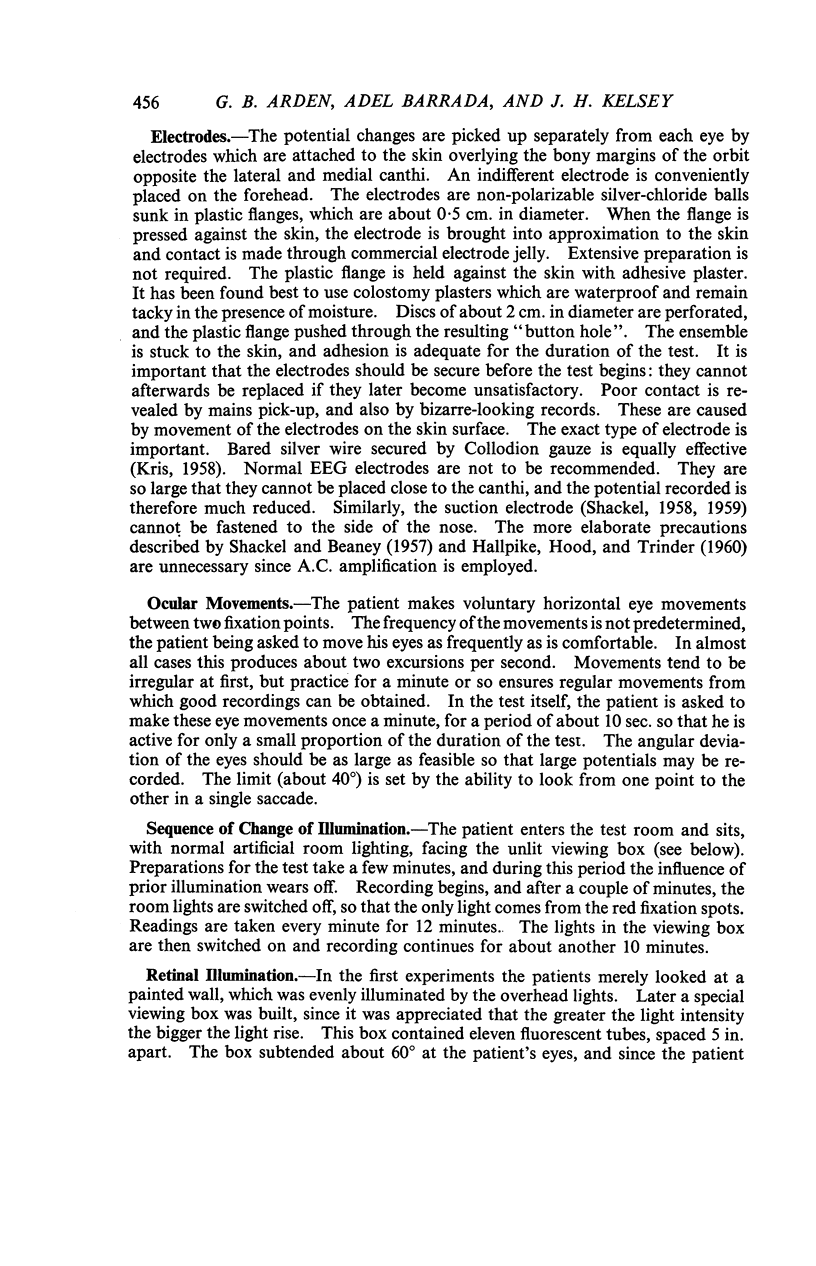
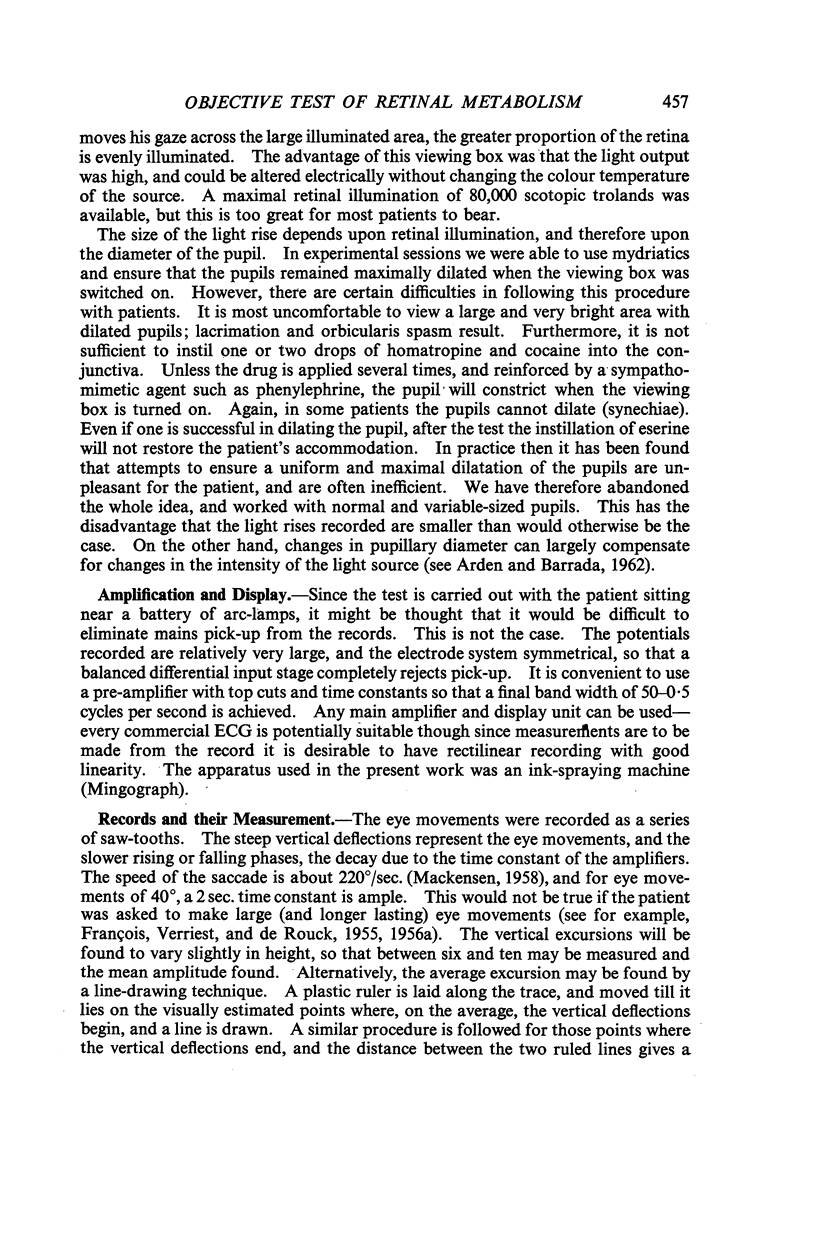
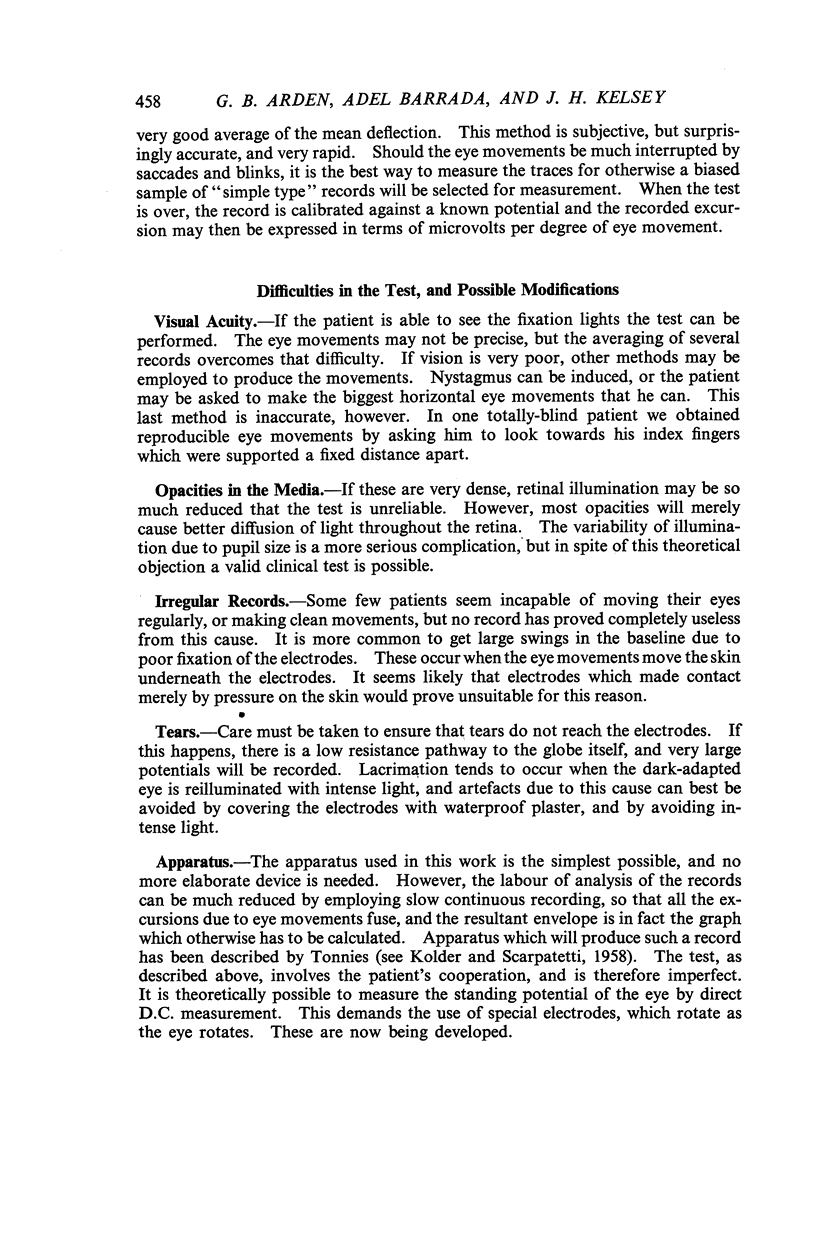

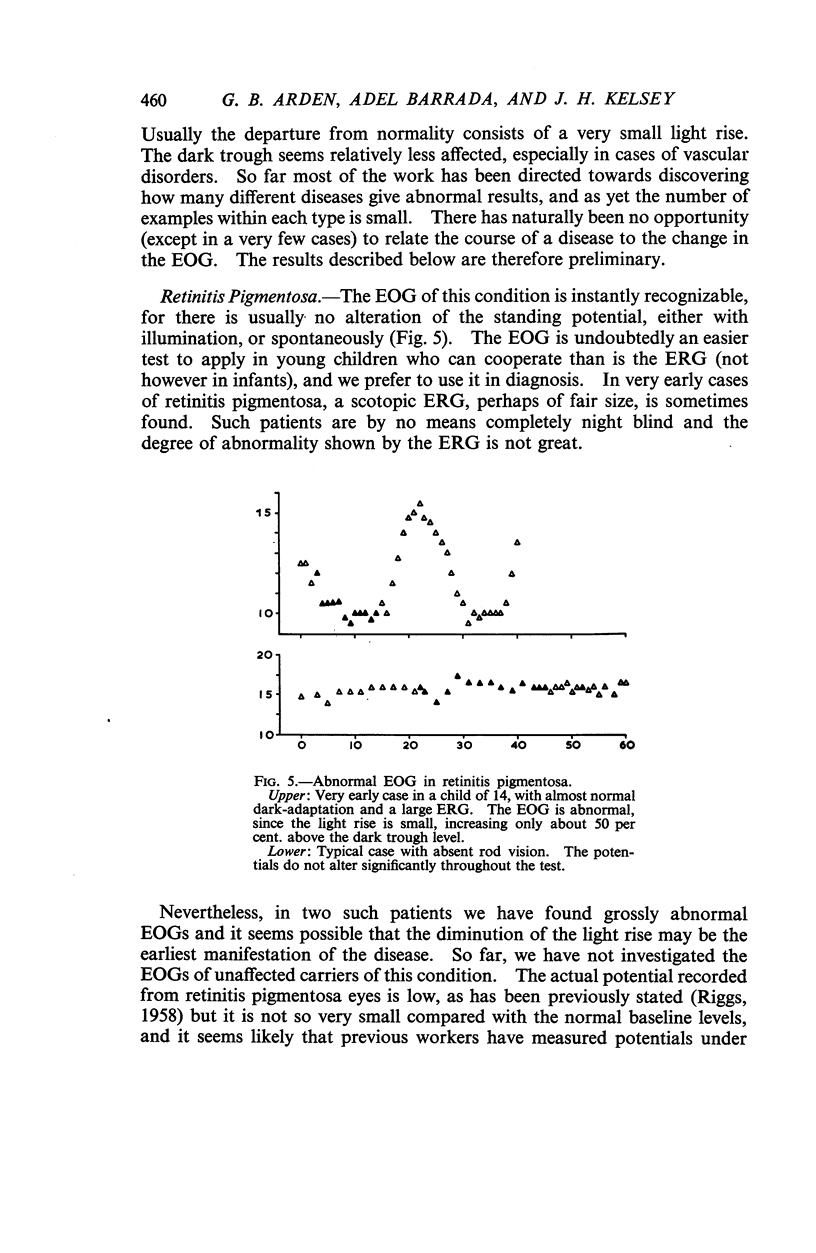
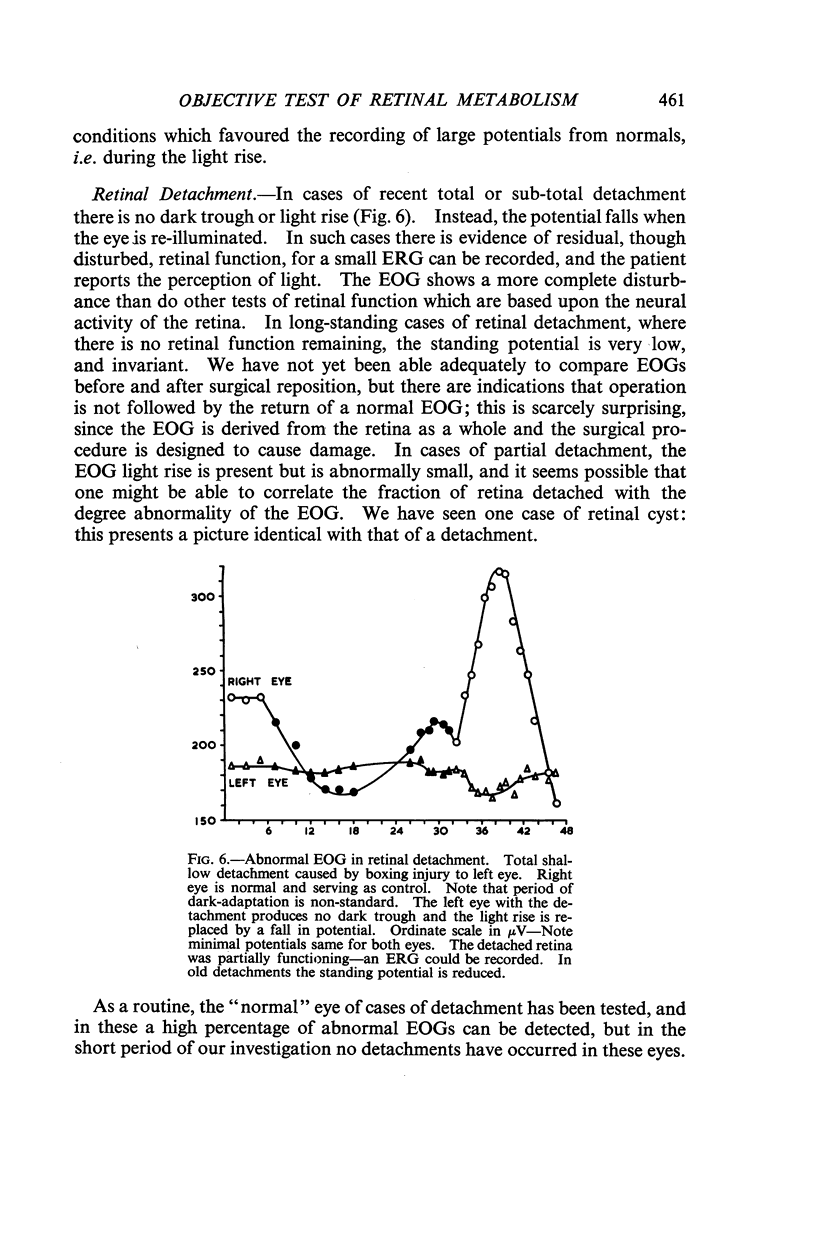
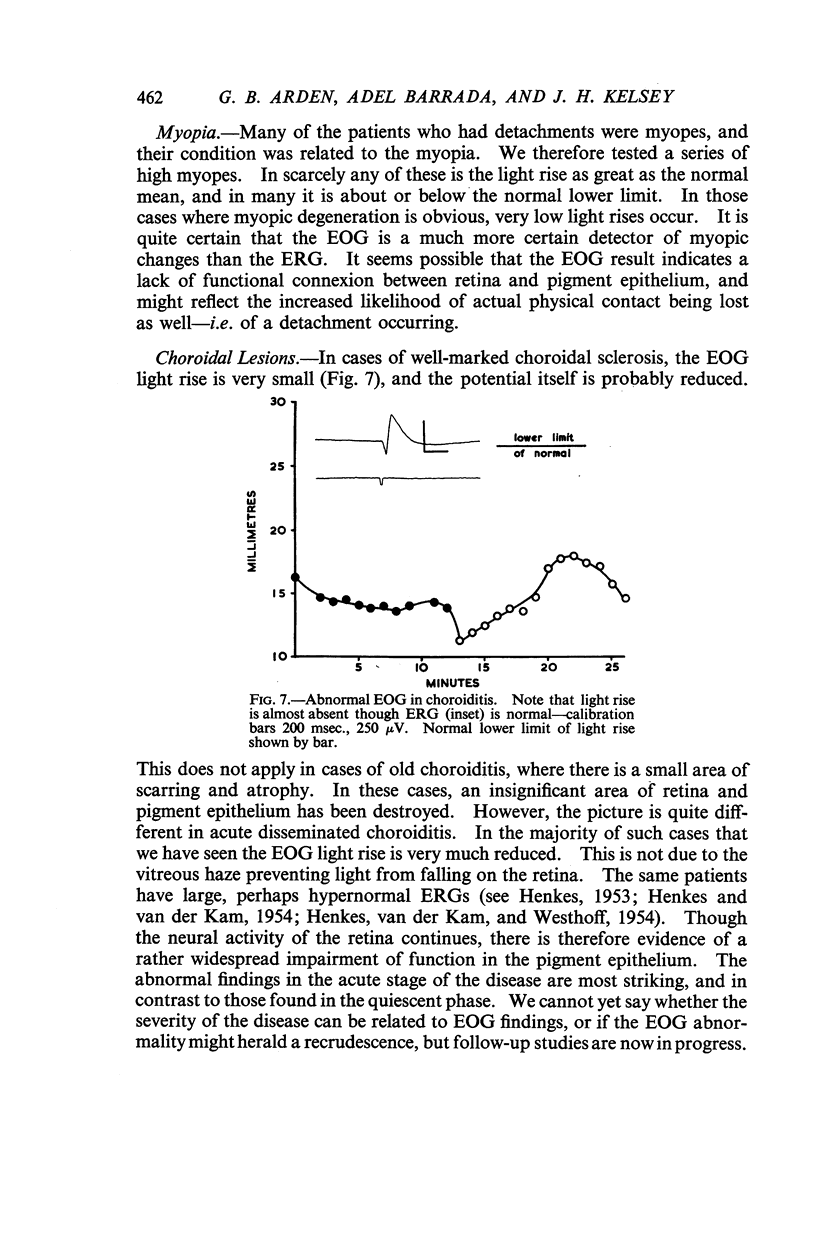

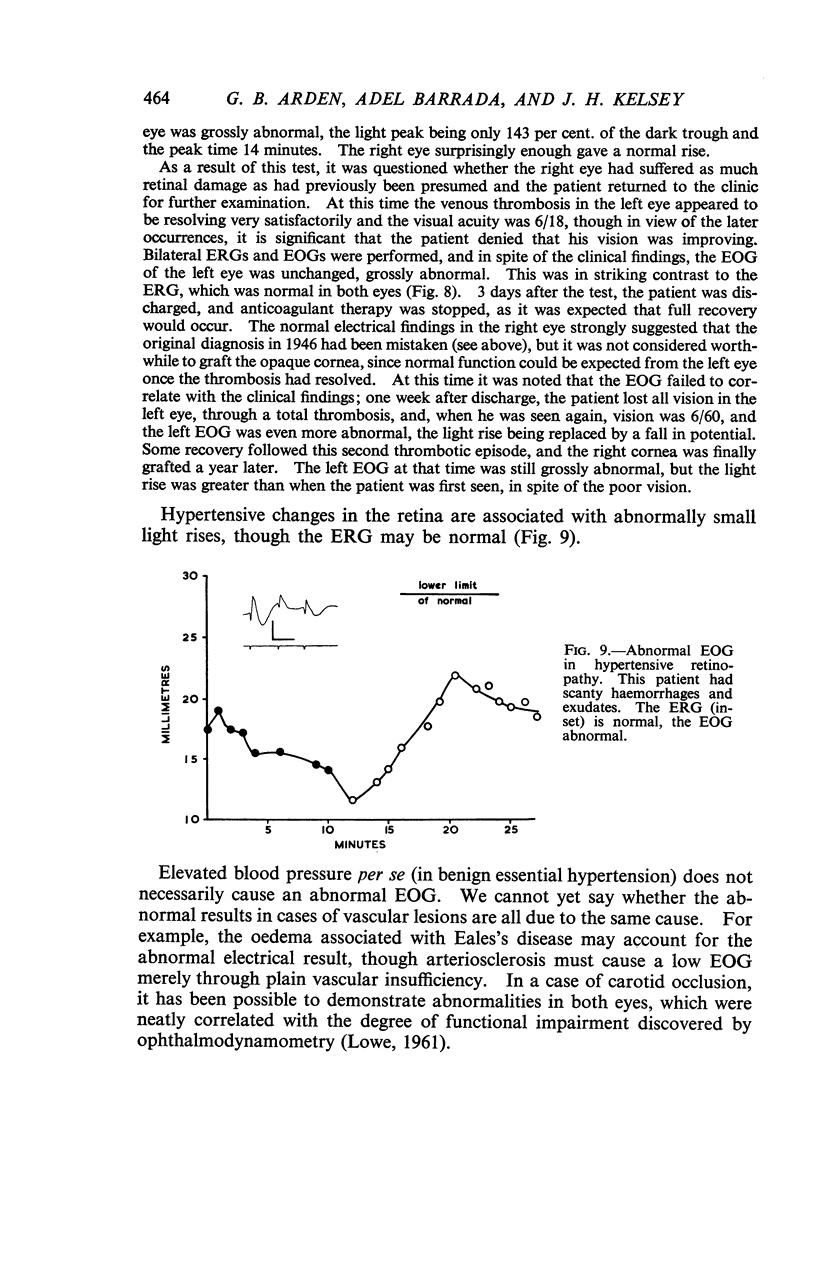
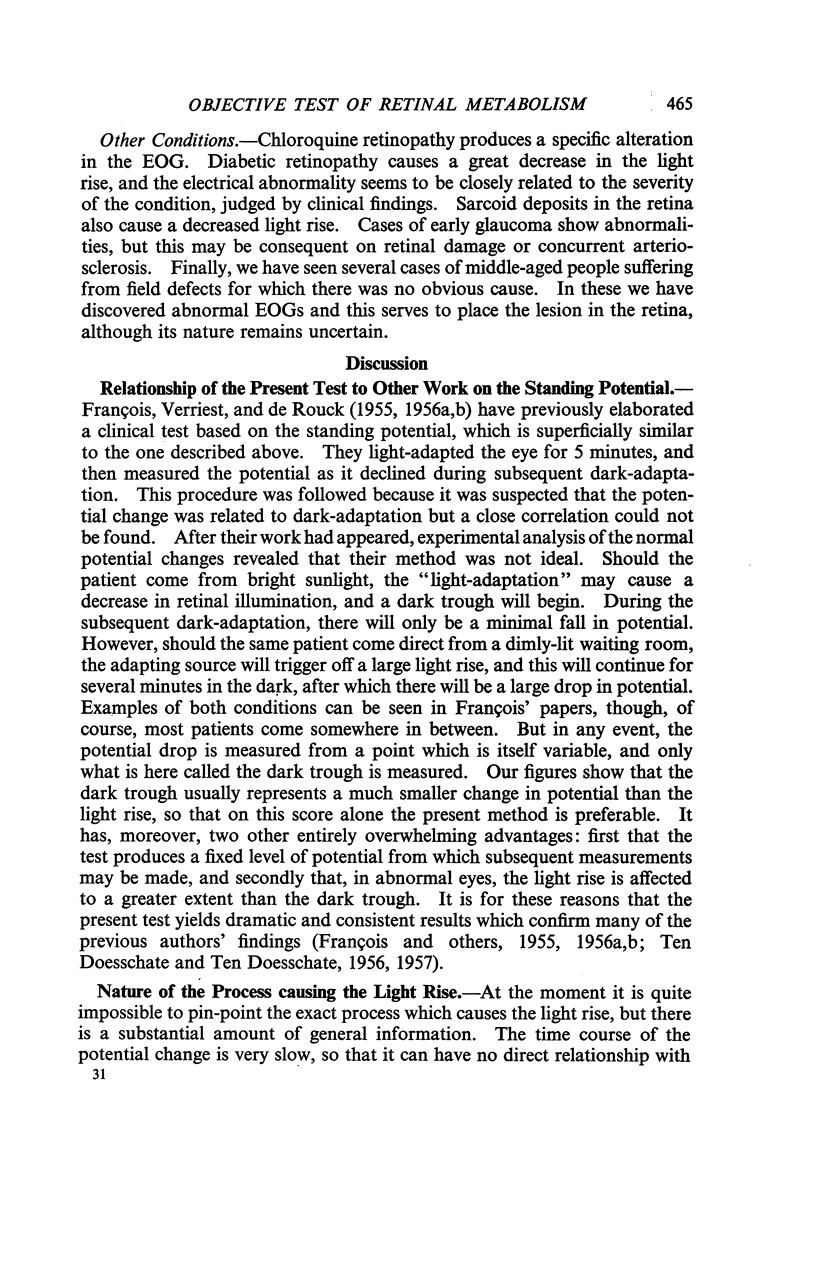
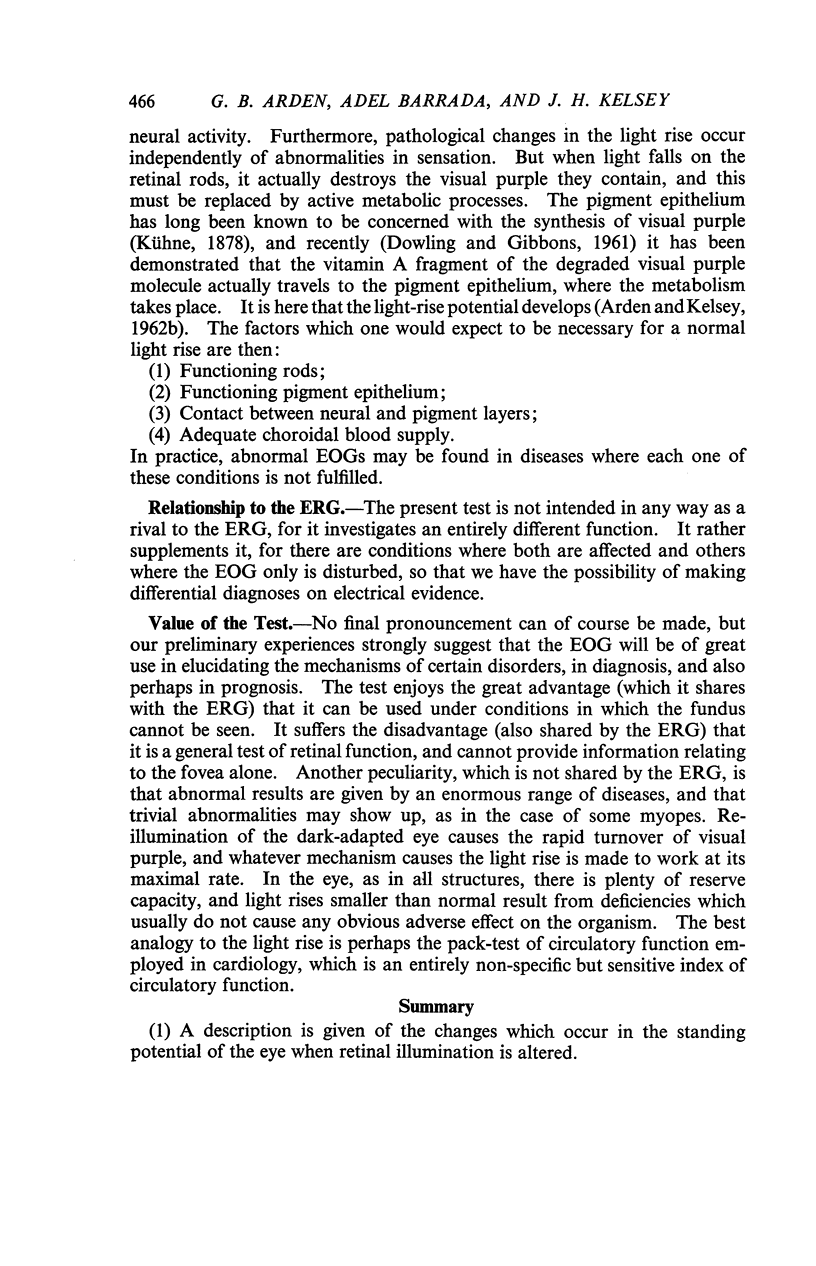
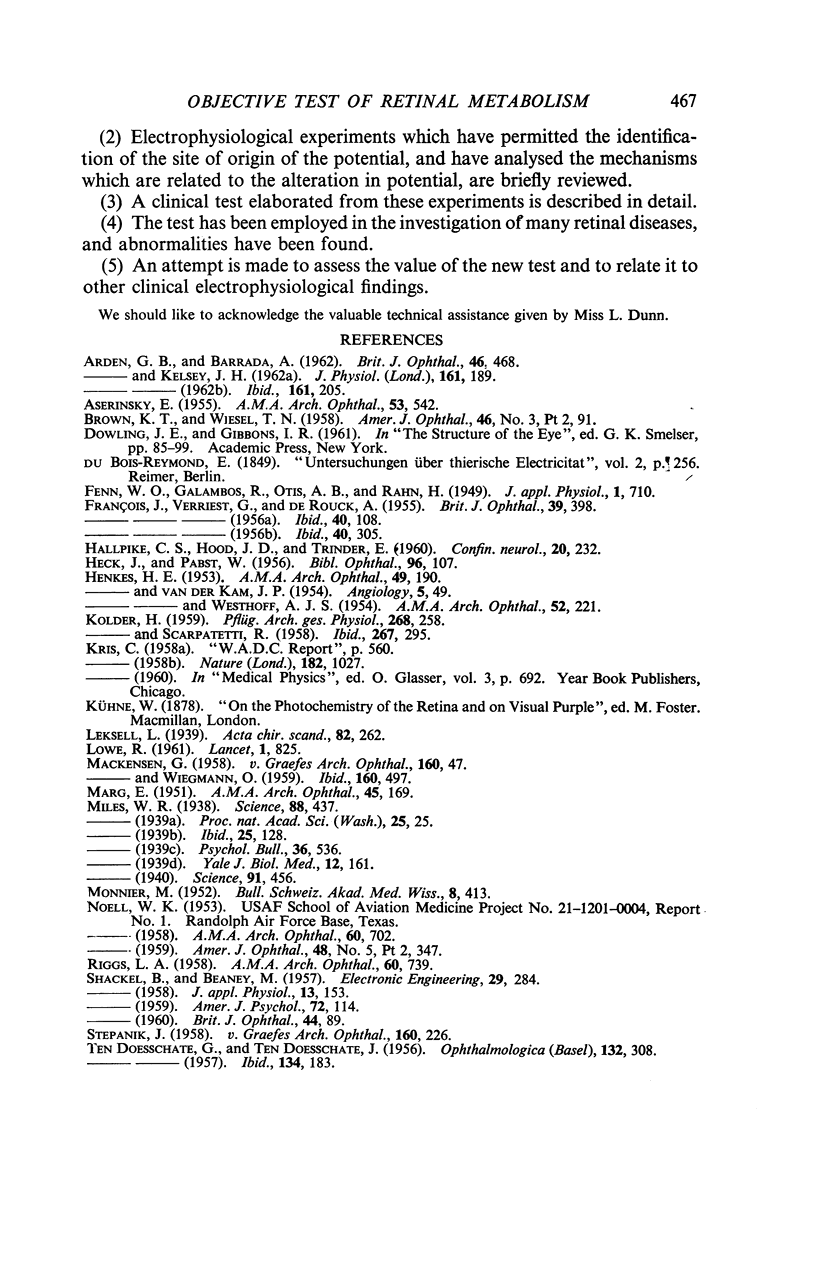
Selected References
These references are in PubMed. This may not be the complete list of references from this article.
- ARDEN G. B., KELSEY J. H. Changes produced by light in the standing potential of the human eye. J Physiol. 1962 May;161:189–204. doi: 10.1113/jphysiol.1962.sp006881. [DOI] [PMC free article] [PubMed] [Google Scholar]
- ASERINSKY E. Effects of illumination and sleep upon amplitude of electro-oculogram. AMA Arch Ophthalmol. 1954 Apr;53(4):542–546. doi: 10.1001/archopht.1955.00930010550013. [DOI] [PubMed] [Google Scholar]
- FRANCOIS J., VERRIEST G., DE ROUCK A. Modification of the amplitude of the human electro-oculogram by light and dark adaptation. Br J Ophthalmol. 1955 Jul;39(7):398–408. doi: 10.1136/bjo.39.7.398. [DOI] [PMC free article] [PubMed] [Google Scholar]
- HALLPIKE C. S., HOOD J. D., TRINDER E. Some observations on the technical and clinical problems of electro-nystagmography. Confin Neurol. 1960;20:232–240. doi: 10.1159/000104933. [DOI] [PubMed] [Google Scholar]
- HENKES H. E. Electroretinography in circulatory disturbances of the retina. I. Electroretinogram in cases of occlusion of central retinal vein or of one of its branches. AMA Arch Ophthalmol. 1953 Feb;49(2):190–201. doi: 10.1001/archopht.1953.00920020195009. [DOI] [PubMed] [Google Scholar]
- HENKES H. E., VAN DER KAM J. P., SANDIFORT WESTHOFF A. J. Electroretinographic studies in arterial hypertension; effect of reduction in blood pressure on electrical response of human retina. AMA Arch Ophthalmol. 1954 Aug;52(2):221–233. [PubMed] [Google Scholar]
- KOLDER H. Spontane und experimentelle Anderungen des Bestandpotentials des menschlichen Auges. Pflugers Arch. 1959;268(3):258–272. doi: 10.1007/BF00362526. [DOI] [PubMed] [Google Scholar]
- MARG E. Development of electro-oculography; standing potential of the eye in registration of eye movement. AMA Arch Ophthalmol. 1951 Feb;45(2):169–185. [PubMed] [Google Scholar]
- MONNIER M. Principes d'électro-oculographie et d'electro-nystagmographie chez l'homme. Bull Schweiz Akad Med Wiss. 1952 Nov;8(5-6):413–425. [PubMed] [Google Scholar]
- RIGGS L. A. The human electroretinogram. AMA Arch Ophthalmol. 1958 Oct;60(4 Pt 2):739–754. doi: 10.1001/archopht.1958.00940080759018. [DOI] [PubMed] [Google Scholar]
- STEPANIK J. Das Bestandpotential des Auges und die experimentelle Steigerung des intraocularen Druckes beim Menschen. Albrecht Von Graefes Arch Ophthalmol. 1958;160(3):226–235. [PubMed] [Google Scholar]
- TEN DOESSCHATE G., TEN DOESSCHATE J. The influence of the state of adaptation on the resting potential of the human eye. Ophthalmologica. 1956 Nov;132(5):308–320. doi: 10.1159/000302987. [DOI] [PubMed] [Google Scholar]


